Many modern motorhomes have kitchen facilities that are good enough to match or even beat our domestic set-ups. At the heart of these is the humble motorhome cooker.
These cookers may be slightly smaller than most home ovens, but even so, they are a brilliant appliance for creating culinary feasts when you’re pitched up at your chosen motorhome site.
And the good news is, you don’t have to be a masterchef to make the most of your cooker and kitchen.
They are really easy to use and clean, and compact, and they give you the freedom to roast, boil, fry and grill, all powered by your vehicle’s gas supply. Here’s everything you need to know about your leisure vehicle’s cooker – and don’t miss what I had to say about motorhome fridges either, another kitchen essential.
The different types of motorhome cooker
In modern British motorhomes, most cookers are supplied by either Thetford or Dometic, with models generally either duplex or triplex.
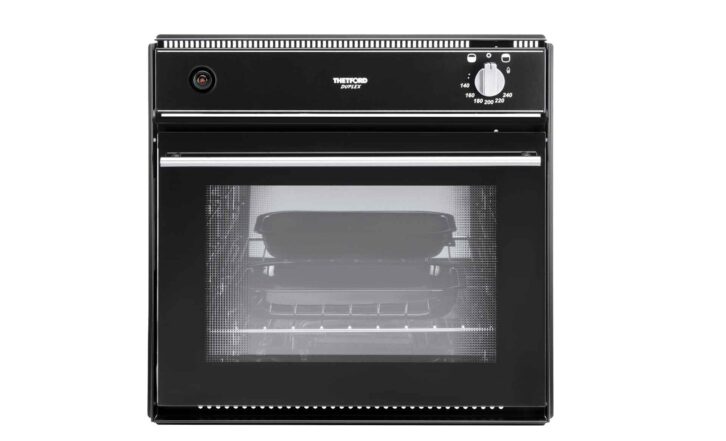
A duplex set-up provides a combined oven and grill, with a hob that is a standalone fixture, located close by in the kitchen area.
Triplex units, on the other hand, bundle oven, grill and hob into one compact and convenient appliance – ideal when space is at a premium.
You can also get standalone grill units; these are often found in small camper vans.
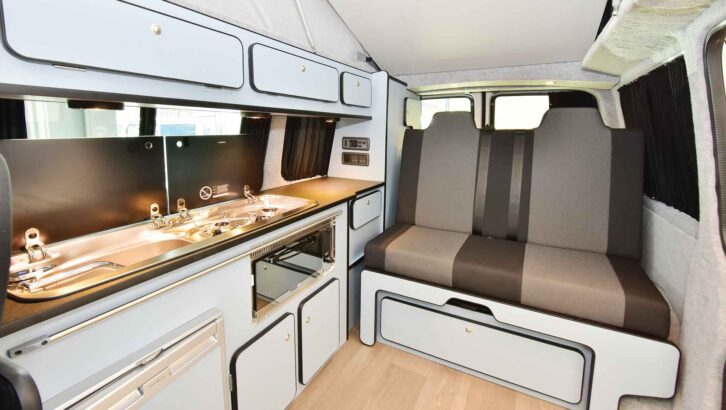
Thetford
Thetford has established itself as a go-to brand in this sector, offering an impressive line-up of LPG-powered cookers designed specifically for use in leisure vehicles.
Its Spinflo duplex units use a multipoint piezo ignition system, meaning that they require no mains electrical connection to function – handy when you’re off-grid. Typically, these units feature one burner in the oven and another in the grill.
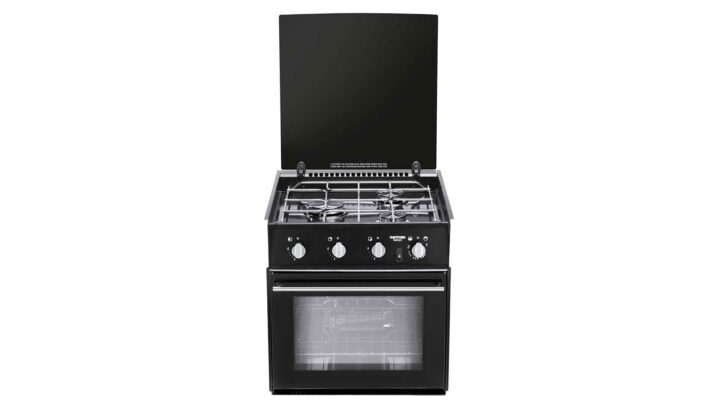
Thetford’s Triplex model cleverly combines the oven and grill in a single compartment, which really helps to maximise kitchen space. The range is broad, too, catering for everything from the more budget campervans through to higher-spec models.
Dometic
Dometic, by contrast, specifically targets the premium end of the market. Its offering is smaller in range but high in quality, and these cookers often have thoughtful extras, such as an internal oven light. This close attention to detail and added convenience are reflected in their price tags.
Ignition methods vary between models. Some cookers come with a dedicated button, while others integrate it into each gas control knob. In both cases, though, ignition is achieved using piezo technology. This clever system produces a spark without needing mains power. It functions by using a spring-loaded hammer to strike a crystal, such as quartz or PZT ceramic, creating a high-voltage charge that then ignites the gas.
Motorhome hobs
Cooker hobs are available in a range of shapes and burner configurations.
Leisure vehicle kitchen designers have a bit more freedom working with duplex-style cookers, where they get to choose the position of the hob on the worktop. Taking a step away from the standard work surface layouts, some designers have really gone to town, placing as much emphasis on style as practicality.
Personally, I’m a great fan of Adria’s contemporary kitchens, which are thoughtfully designed, maximising form and function, with funky mood lighting to match. Other brands seem to have followed suit.
One of my personal bugbears is having four burners on a hob, which can never all be used at the same time because most pans are simply too big. That said, at least you get a choice of burner sizes for added versatility.

I’d always favour three well-placed and sensibly spaced burners, and I’m also keen on dual-fuel hobs with both electric and gas burners. Typically, these will deliver one electric hotplate and three gas burners, for instance, as seen in the Auto-Sleeper Nuevo EK Plus.
However, in some cases, motorhomes such as the Benimar Mileo 294 come with two gas burners and one electric hotplate.
This means you should always have the means to make that all-important cuppa, even if you run out of gas or you are not on hook-up. It has saved my bacon more than once.
Triplex cookers, where the hob sits on top of the combined oven/grill, are common and perfectly functional, if not perhaps as stylish.
They too come in dual-fuel formats and usually have a hinged glass cover that drops down to provide extra worktop space. You must be careful not to put the top down on a hot burner.
Motorhome grills
Most motorhome cookers also offer a grill facility. In my experience, the grills require a long warm-up time before they will toast your bread at anything close to the speed and evenness of a domestic cooker grill.
That said, they can be useful. Just remember not to leave the pan rattling around inside the grill when you’re loading your motorhome and preparing to take to the road, or you could easily scratch the internal surfaces.
Motorhome ovens are normally powered by gas, but are usually convection ovens, not fan cookers. This can make them slightly unreliable ovens, as the cooking can be uneven and they can take about 20% longer than your domestic cooker.
However, you’ll soon get to know your oven’s foibles and relative cooking times, and can adapt your plans to suit, perhaps turning the dish halfway through, or selecting meals that are less ‘fickle’. For example, soufflés are probably not the best choice when you’re pitched up, but if you can turn out a decent Yorkshire, you’ll know you’ve cracked it.
Mind you, I have been on a dozen or so foodie photoshoots with touring cook extraordinaire Monica Rivron, and I can confirm that everything she makes turns out perfectly delicious. So, what’s that you were saying about a poor workman?
The top shelf of the oven will be the hottest and might be the only one for the thorough cooking of things like meat, while the lower shelves are good for the likes of garlic bread, or warming food through.
If you can’t be without your fan oven, Thetford’s K1520 cooker does have one as an option, and could probably be specified in a new ’van by the keen cook.
How to choose the right cooker for your motorhome
Oven size
Always bear in mind the oven capacity when choosing your motorhome, especially if you enjoy creating family feasts. A typical oven at home holds around 60 litres, while Thetford’s Caprice, for example, offers 36. That shouldn’t preclude you from creating culinary masterpieces, but it might affect timings and your meal planning.
Position of the appliances
When choosing the best motorhome, the positioning of ovens, hobs and microwaves is another important consideration. Placed too high up and it could be risky for shorter cooks, while standard-fit, undercounter locations might not appeal to other customers.
Ventilation
Does the location of your cooker allow for good ventilation? Many are positioned in front of the kitchen window (take care your hob burners don’t blow out on windy days), and high-spec ’vans might have a roof vent or even an extractor fan directly above.
Worktop integration
Does your hob have a cover that allows you to make use of the worktop space when the burners aren’t being used?
Spare parts
For spares for any modern ’van, you should contact the vehicle manufacturer or visit the appliance manufacturer’s website.
If you’re buying an older model, check that spare parts are readily available.
Cooker condition
Of all the used ’vans I’ve seen reviewed over the years, I’d estimate 50% have ovens and/or hobs that have barely been used and are in as-new condition.
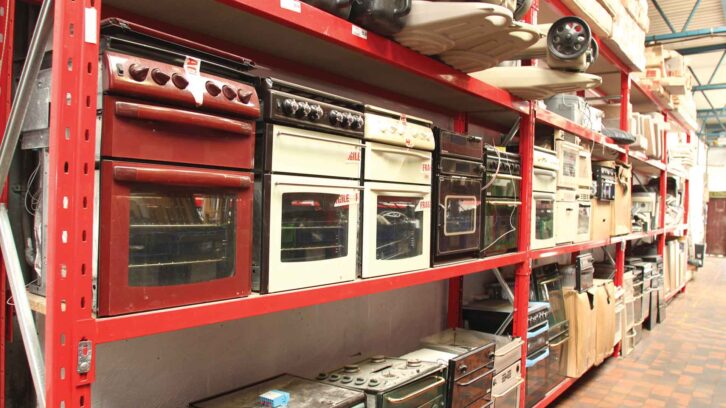
That’s great news for all of the touring cooks out there, and something to watch for when you’re choosing a used motorhome.
Getting the most from your motorhome’s cooker
1 In 1996, gas cut-outs became a compulsory addition to leisure vehicle cookers. Test yours by igniting each of the burners one at a time, running it for about 10 seconds, then turning it off.
If you hear a click within a minute, you can be reassured that the cut-out is stopping the gas flow.
During an approved vehicle service, the technician will test all of your automatic hob cut-offs.
2 The triangular kink in the outer bar of the oven shelf should face downwards, because this prevents the shelf from pulling all the way out when you’re trying to retrieve a dish from inside.
Likewise, the raised bar at the back of the shelf will prevent dishes from being pushed off the back of the shelf when it’s being pulled out.
3 Always ensure that your hob cover is fully opened before lighting any of the burners. A slightly closed cover can trigger an automatic cut-off valve and impede the gas flow to the hob.
4 A correctly functioning LPG burner will burn with a clean blue flame.
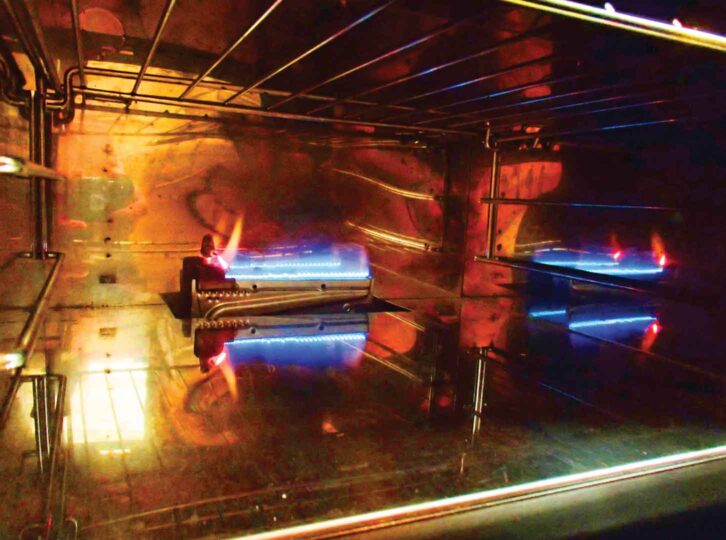
5 If one burner flame gets smaller when a second or third burner is lit, this might indicate a faulty regulator, or that you are running low on gas.
6 Ensure the cooker has been emptied of anything you store inside it when you are on the road, before turning it on.
7 Many leisure vehicle ovens require a 20-minute warm-up period at full heat. You then turn them down to the required temperature.
8 After buying a motorhome that is new-to-you, start making notes of cooking times, temperatures and even which shelf you use in the oven, because this will help you to master its quirks more quickly.
After getting your ‘van and cooker sorted, you could be wondering about what else you can get for your vehicle to enhance your touring experience – this is where our guide to motorhome upgrades will come into their own.
Future Publishing Limited, the publisher of Practical Motorhome, provides the information in this article in good faith and makes no representation as to its completeness or accuracy. Individuals carrying out the instructions do so at their own risk and must exercise their independent judgement in determining the appropriateness of the advice to their circumstances. Individuals should take appropriate safety precautions and be aware of the risk of electrocution when dealing with electrical products. To the fullest extent permitted by law, neither Future nor its employees or agents shall have any liability in connection with the use of this information. Double check any warranty is not affected before proceeding.
If you’ve enjoyed reading this article, why not get the latest news, reviews and features delivered direct to your door or inbox every month. Take advantage of our brilliant Practical Motorhome magazine SUBSCRIBERS’ OFFER and SIGN UP TO OUR NEWSLETTER for regular weekly updates on all things motorhome related.
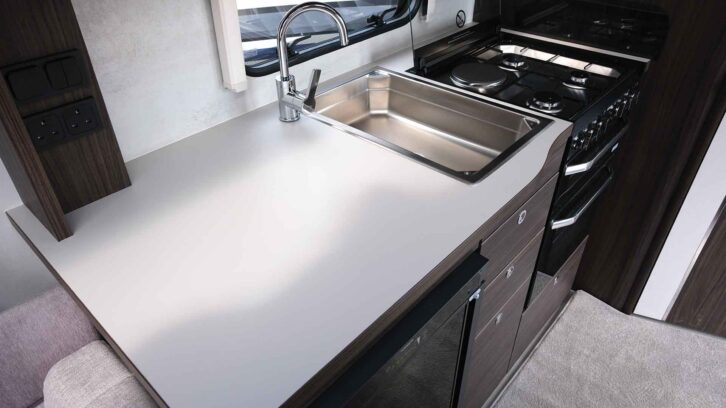
Leave a Reply